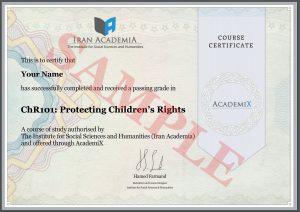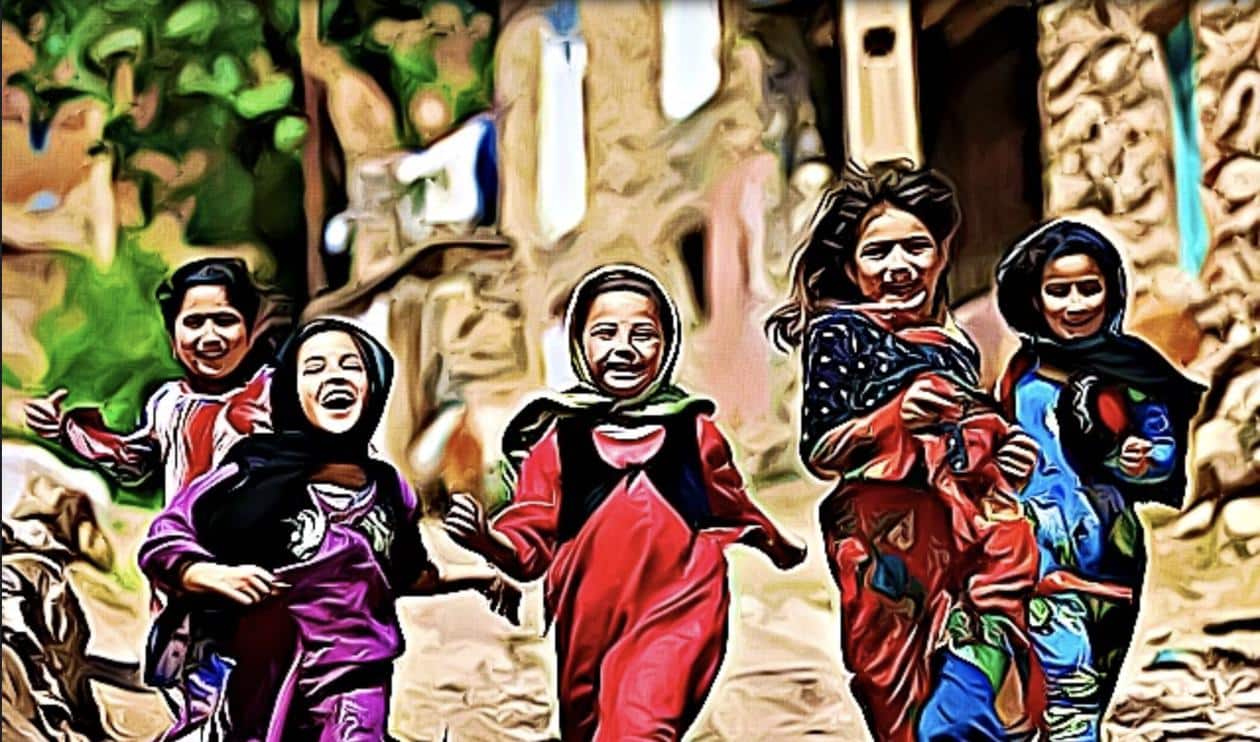Course Schedule
Week One: Definitions
- Defining childhood and its challenges
- Why it is necessary to have a child protection policy
- Components of the child protection system; Promoters and media
- Some general challenges of child protection
Week Two: Children’s rights and the challenges of violating them / Part One
- Explaining the relationship between children and justice
- Analysis of the phenomenon of working children from the perspective of social justice
- Types of child abuse and a look at sexual mutilation of children
- Investigating the phenomenon of child marriage
- A brief overview of the use of children in armed conflict
Week Three: Children’s rights and the challenges of violating them / Part Two
- Analysis of educational justice
- The child’s right to environmental protection education
- Children and natural crises
- Challenges of refugee children
- Child identity in a multicultural world
Week Four: Systemic approach to child protection (policy making)
- Basic tools of child protection – systems approach and its components
- The child support system and its components in Canada
- Canadian judicial system and its challenges
- Successful experience of supporting children with a systemic approach
- Recognizing and applying a systemic approach in supporting children: a guide for program staff
Week Five: Systematic method of child protection – World Health Organization model
- The INSPIRE model: Seven steps to prevent violence against children
- Examining the protective role of laws and regulations at the local level
- The role of social habits and values in supporting children
- Safe social environment and supportive community
- The education system as part of the child protection system
- 100 successful examples of child protection systems
- Analyzing Afghanistan’s experience in designing a child protection system
- Modeling the European experience in the use of components of the child protection system
- A comparative look at two European countries and Iran in the systematic support of children
- National strategy to end child marriage in Nigeria
Week Six: Challenges and opportunities to protect children’s rights in Iran
- Child and Adolescent Protection Law
- Innovations and potential possibilities of the law for the protection of children and adolescents
- A structural critique of the new law and its challenges in practice
- Limitations of the new law in comprehensive protection of children
- Ideology and children: Opportunity or limitation
- Assessment of child maltreatment in multicultural contexts
- The role of culture and cultural diversity in supporting children
- A security perspective on social harms in creating challenges in the way of protecting children
- Examples of respect for culture in child protection policies
- The experience of activism in facing social harms related to children
- Qualitative assessment of drivers of child marriage in Pakistan
- Advocacy experience to change laws in favor of children
Week Seven: The role of the media in supporting children
- Media report – Farsi example of domestic news follow-up: Children of Shinabad
- The child as a news subject in the media and social networks
- News report about the invisible children of work – children of carpet weaving girls
- The positive and negative role of the media in addressing challenges related to children
- Media and children’s rights
- Legal protection of children in media and virtual networks
- The role of institutions and civil activists in controlling the media’s behavior in dealing with children
- Suggestions to reduce the side effects of dealing with children in the media
- Hearing children’s voices in the media
- 17 strategies to end the sexual mutilation of girls (creative use of media)
- Introducing Negar Rizvani – poet, political refugee
- Hearing children’s voices: My dear jailer
Week Eight: Civil activists and protection of children
- Pathology of the effect of fertilizers on Iran’s political development
- Different methods of activism and methodical civil activity components
- Ethics in NGOs
- Activism in the direction of supporting children by observing the principle of “intervention without harm”
- Taking into account the child’s opinions and respecting his/her best interests at the same time
- Necessary infrastructures for children’s civil participation and solutions for Iranian society
- Child Friendly City Experience – Republic of Korea
- An experienced solution in preparing children to participate in civic activities
- Promotional tools
- Creating a child-friendly environment for children to play a role in civic activities
Course Completion Certificate



